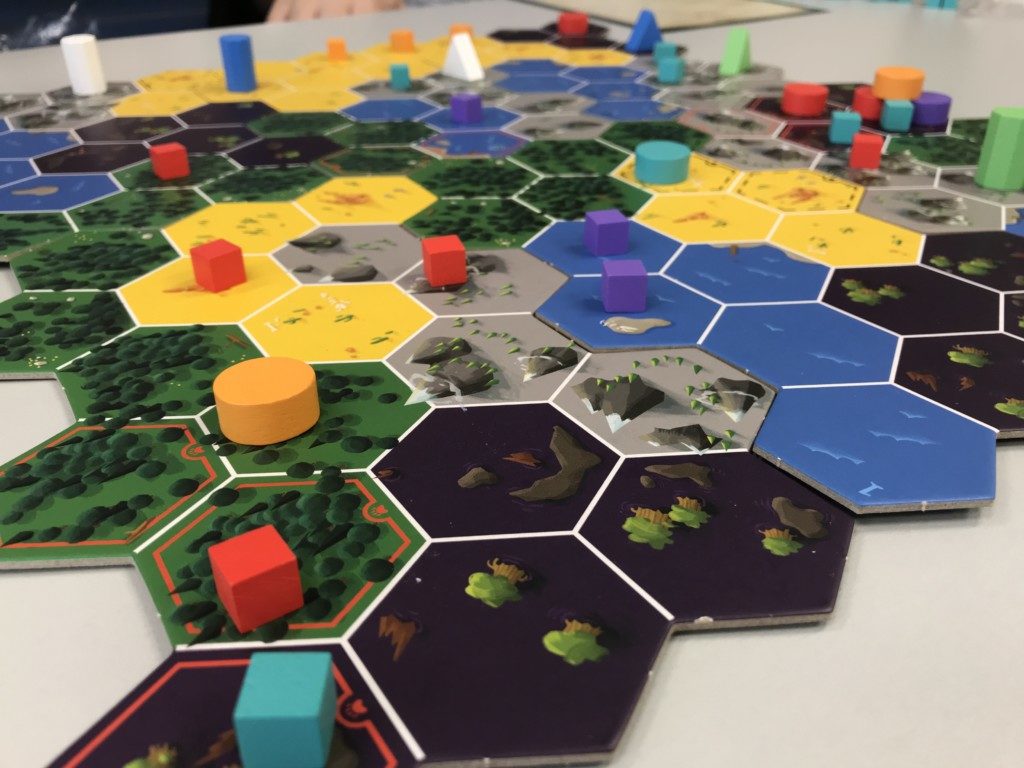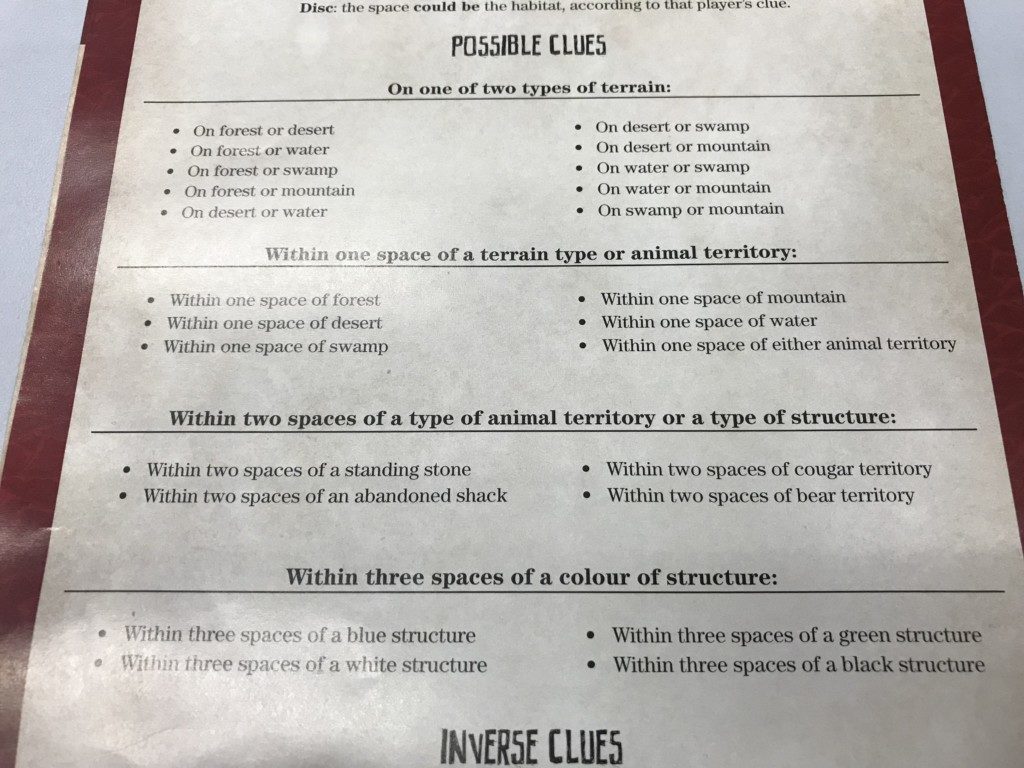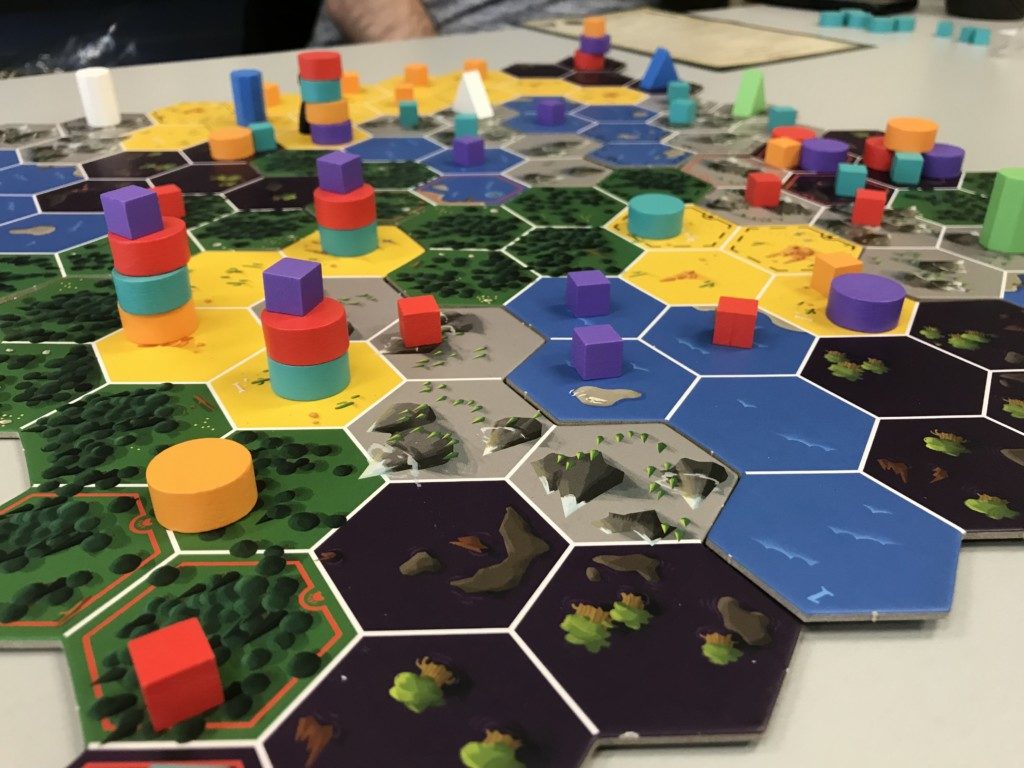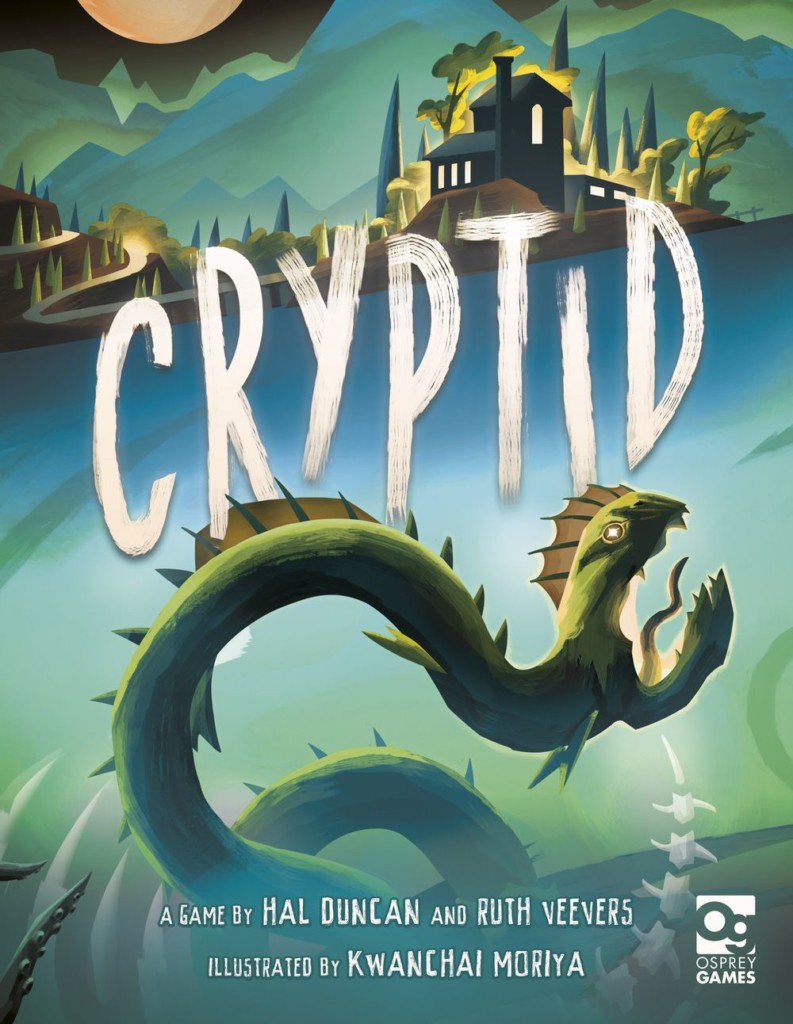In Cryptid you’re looking for a creature somewhere in the land.
But, so is everyone else, can you find it first?
You’ve studied the footage, connected the dots, and gathered what meagre evidence you could. You’re close — soon the whole world will know the truth behind the Cryptid. A group of like-minded cryptozoologists have come together to finally uncover the elusive creature, but the glory of discovery is too rich to share. Without giving away some of what you know you will never succeed in locating the beast but reveal too much and your name will be long forgotten!
Cryptid Game Play
You have a board covered in hexes of different terrain types and a few structures of different types on the board. These are very specific setups based on details shown on a card.
There are also a few groups of spaces marked out as areas where Cougars and Bears live, that’s important

On the reverse of that card, it shows the page numbers in different books players need to look in depending on the player count. This will give each player a clue that will determine which space on the board is THE space players need to find.
Clues
There are basically 4 types of clues shown in the image below.
- On one of two types of terrain (eg. either on a desert or a mountain)
- On or near a terrain type or animal territory (eg. on or next to a water space)
- Within 2 spaces of a Structure/Animal Territory (eg. within 2 spaces of a Bear Territory)
- Within 3 spaces of a coloured Structure (eg. within 3 spaces of a green structure)

There they are, you have one of them and the other players have one each but they’re kept secret.
Playing the Game
The game is played with a pawn being placed in any single space by the active player and they ask any single player if “it” could be there. If it could, based on that player’s known clue, they place a disk.
If it couldn’t be there, they place a cube. Then the active player places a cube on
Another thing a player can do is place the pawn and say “It’s here”.
If they do that, in clockwise order, players place a disk or cube depending if
But, if all the other players place a disk, the player will win.
Theme
Erm… No. You’re trying to find a space on the board and you’re looking for some kind of creature? It might as well be your keys or the TV remote for all it matters.
OK, so the clues do work towards finding a creature’s habitat. If you know it hangs around Swamps you’d search around swamps. If you see a fellow cryptozoologist searching around areas where there are Bears you’d look for Swamps near bears.
So it does make some sense, but when playing it feels abstract and that’s OK.
Setup
Setting up the boards and the structures just requires accuracy and care. It doesn’t take long but this is one game where you should take your time setting up.
Components & Artwork
The board and all the bits are decent. What you want from this is to be nice and clear so you’re focused on remembering clues given and not worrying about symbols and terminology. There’s none of that.
A couple of issues, 2 of the player colours are quite close. Different enough (for me anyway) but I did have to concentrate when looking at the board.
Also, some of the ‘Bear Areas’ which are written in black are on the dark Forest tiles and are difficult to see. In a game that requires accuracy at this level, you can’t afford to have anything even slightly distracting.
Ease of Teaching & Accessibility
Well, there are very few rules so anyone can play this game. Teaching is very straight forward too.
The only issue of accessibility is that it is closed information. It would be tough for an inexperienced player to ask for help without giving away too much info about their clue.
Cryptid Summary
When I first heard about this game, I’ll be honest, I ignored it. It sounded like (and I mean this in a nice way) a clone of Tobago. I haven’t played that game but I knew of it and this is almost the same game.
Gameplay-wise it’s very similar to P.I. which is a game I really enjoy. You’re trying to deduce a location, suspect and crime based on information that only the player to your right knows.
You’re also placing cubes and/or disks depending on how right you are. But the difference is that each player is trying to find their own thing. Although, if you can figure out another player’s suspect for example you know that they didn’t do your crime.

Game Summary
I do want to say I’m not a fan of games that require this much accuracy. One little mistake can give away so much. Also, if the mistake isn’t noticed by the player that can throw off all your deduction and effectively ruin the game.
However, we DID have 2 errors in our 2 games. The first was a genuine misunderstanding of the rules corrected VERY quickly. The second was due to the Bear Area/Forest Tile graphic issue I mentioned earlier which I will call a game error not so much a player error.
But, as a deduction game, it’s very interesting. it’s fun using the other player’s cubes and disks to narrow down what their clue might be. Then, once you have an idea of what each player’s clue is you can start to look for the few spaces where each clue will overlap.
So I had a lot of fun playing this helped by the fact we played it twice back to back and I won both 😀
Jesta ThaRogue



Leave a Reply